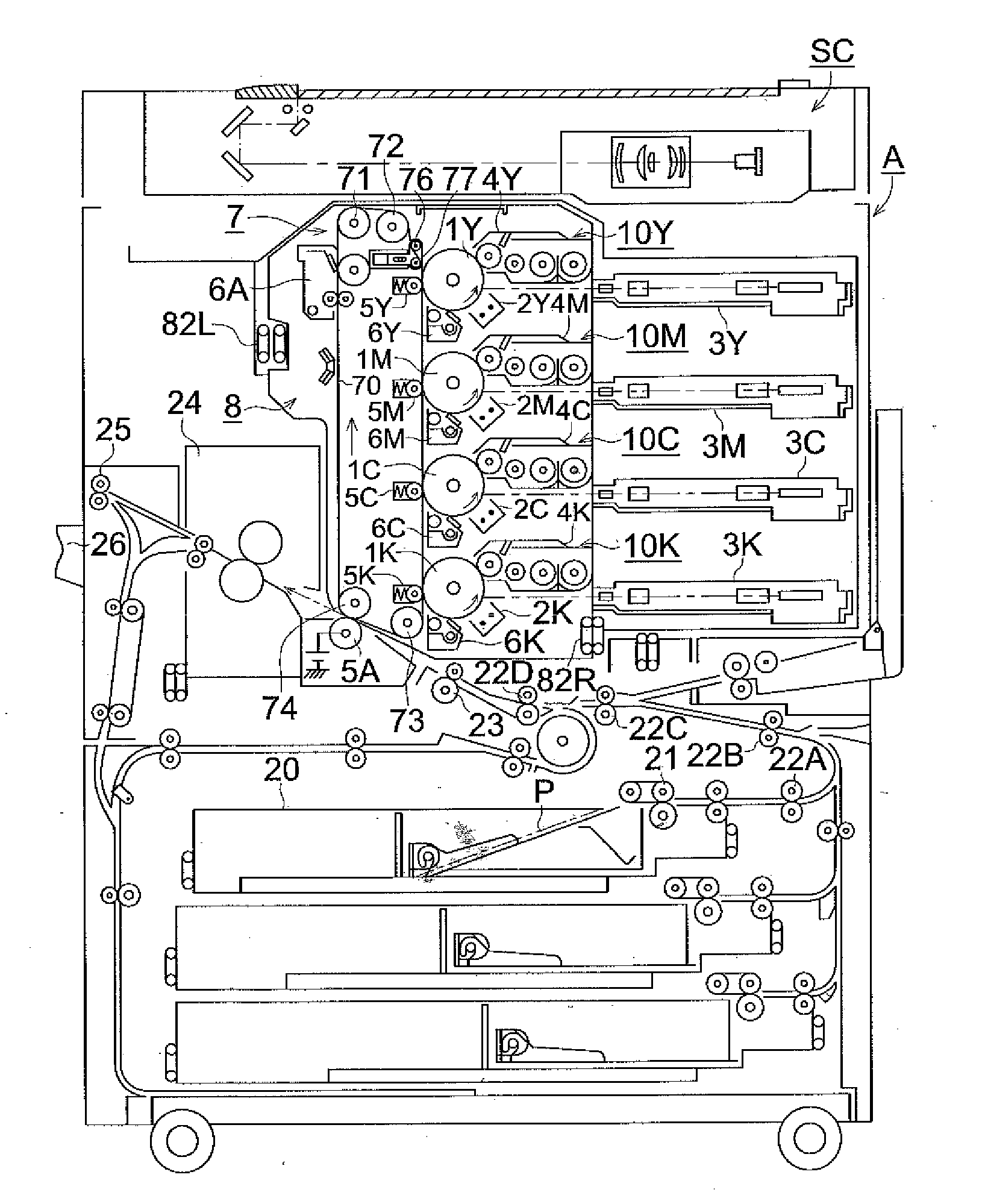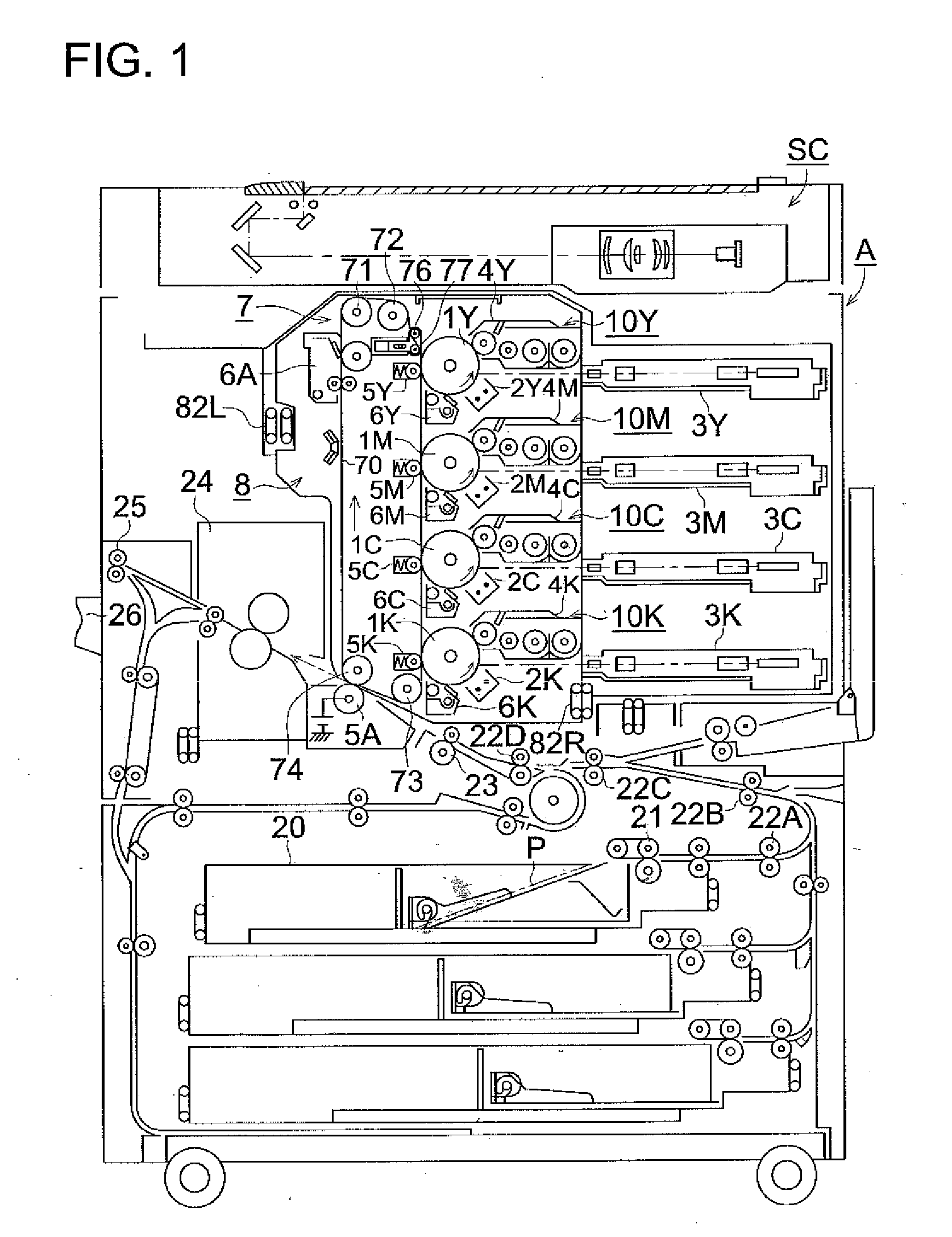Toner for electrostatic image development, full-color toner kit and image forming method
a toner and electrostatic image technology, applied in the field of toners for electrostatic image development, can solve the problems of color contamination, excessive variation of lightness, reduced lightness, etc., and achieve the effect of superior transparency and light fastness, and stable color reproduction
- Summary
- Abstract
- Description
- Claims
- Application Information
AI Technical Summary
Benefits of technology
Problems solved by technology
Method used
Image
Examples
example 1
Preparation of Toner 1 by Kneading / Grinding Method
[0111]The toner constitution described below was placed in a HENSCHEL MIXER (produced Mitsui-Miike Kogyo Co., Ltd.) and mixed with stirring at a blade-circumferential speed of 25 m / sec for 5 min.
Polyester resin*100 mass partsC.I. Pigment Red 209 5 mass partsReleasing agent (pentaerythritol 6 mass partstetrastearate)Charge controlling agent (boron 1 mass partdibenzylic acid)*condensation product of bisphenol A / ethylene oxide adduct, terephthalic acid and trimeritic acid having a weight average molecular weight of 20,000
[0112]The mixture was kneaded by a biaxial extrusion kneader and discharged at a temperature of 125 to 128° C. The kneaded mixture was roughly ground by a hammer mill, further ground by a turbo-mill (produced by TURBO KOGYC Co., Ltd.) and was subjected to a fine powder classification treatment by an air classifier employing Coanda effect to obtain colored particles having a volume-based median diameter of 5.5 μm.
[0113]N...
example 2
Preparation of Toner 2 by Emulsion Coagulation Method
(1) Preparation of Particular Colorant Dispersion 1:
[0116]11.5 parts by mass of sodium n-dodecylsulfate was placed in 160 parts by mass of deionized water and dissolved with stirring to prepare an aqueous surfactant solution. To the aqueous surfactant solution was gradually added 40 parts by mass of C.I. Pigment Red 209 and the foregoing composition was slowly added and dispersed by using CLEARMIX W-motion CLM-0.8 (produced by M Technique Co.) to obtain colorant microparticle dispersion 1.
[0117]Colorant microparticle 1 contained in the foregoing colorant microparticle dispersion 1 exhibited a volume-based median diameter of 98 nm. The volume-based median diameter was measured by using MICROTRAC UPA-150 (produced by HONEYWELL Corp.) according to the following conditions:[0118]Sample refraction index: 1.59[0119]Sample specific gravity: 1.05 (equivalent converted to spherical particle)[0120]Solvent refraction index: 1.33[0121]Solvent...
PUM
 Login to View More
Login to View More Abstract
Description
Claims
Application Information
 Login to View More
Login to View More - R&D
- Intellectual Property
- Life Sciences
- Materials
- Tech Scout
- Unparalleled Data Quality
- Higher Quality Content
- 60% Fewer Hallucinations
Browse by: Latest US Patents, China's latest patents, Technical Efficacy Thesaurus, Application Domain, Technology Topic, Popular Technical Reports.
© 2025 PatSnap. All rights reserved.Legal|Privacy policy|Modern Slavery Act Transparency Statement|Sitemap|About US| Contact US: help@patsnap.com


